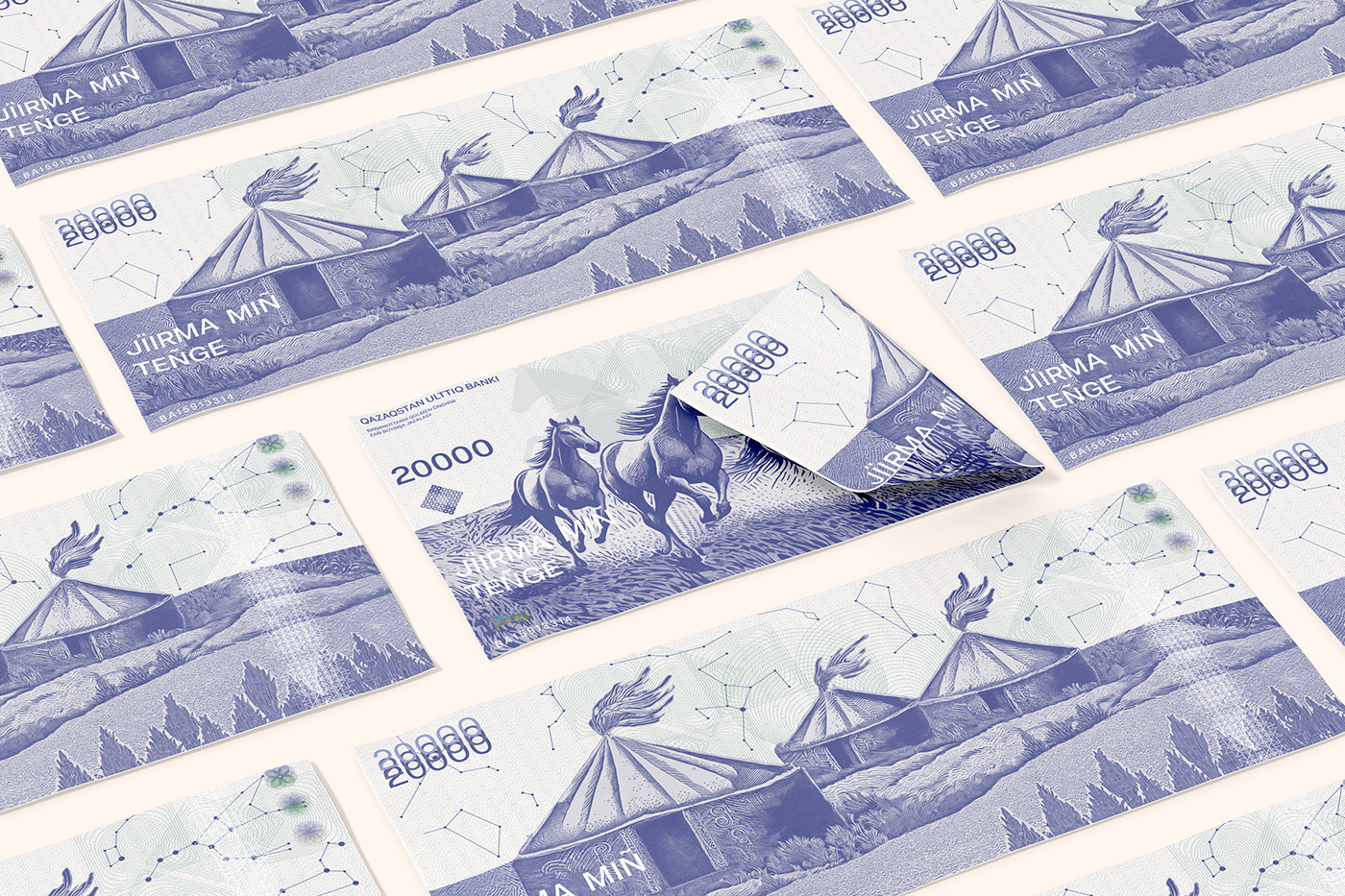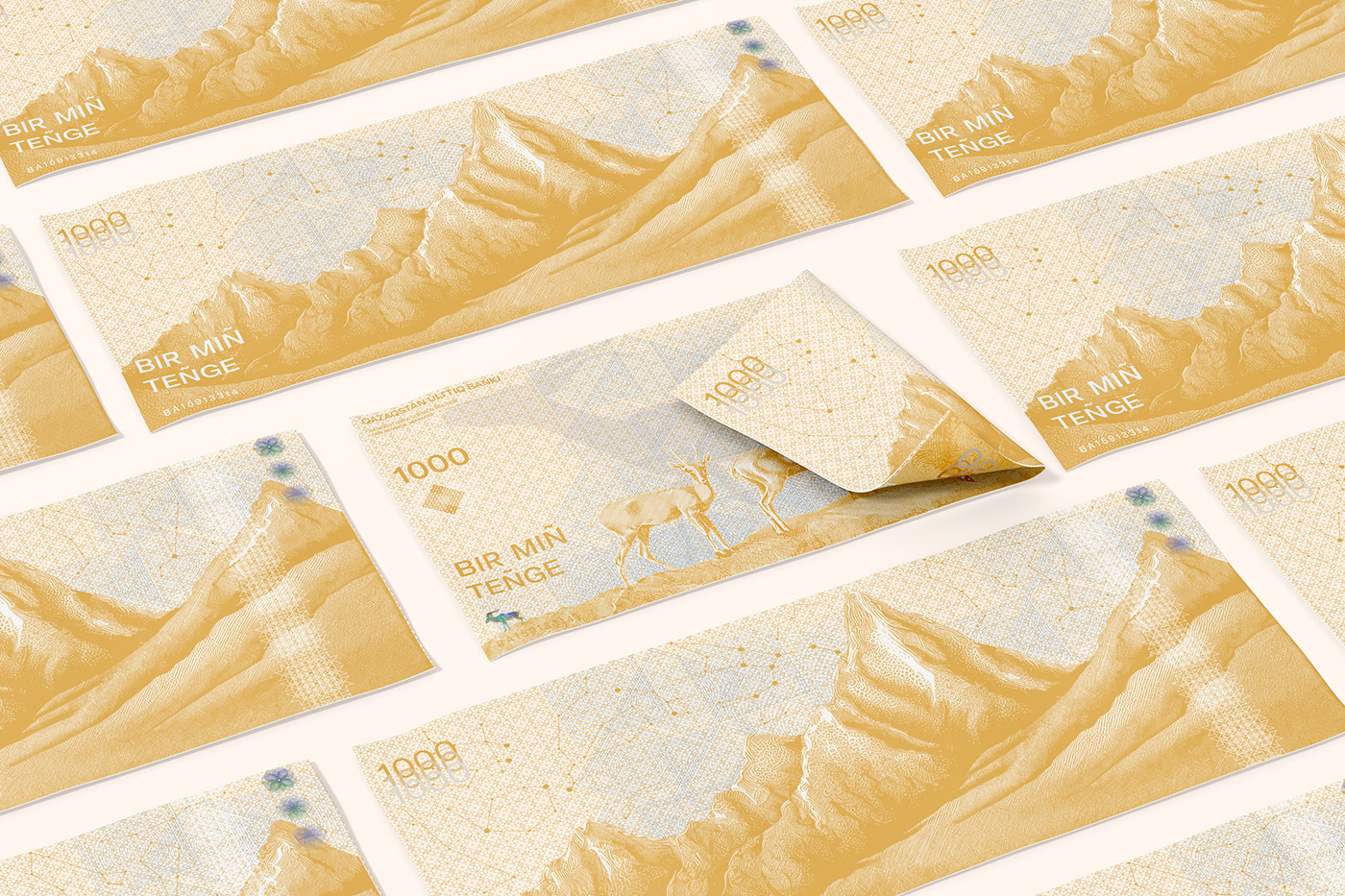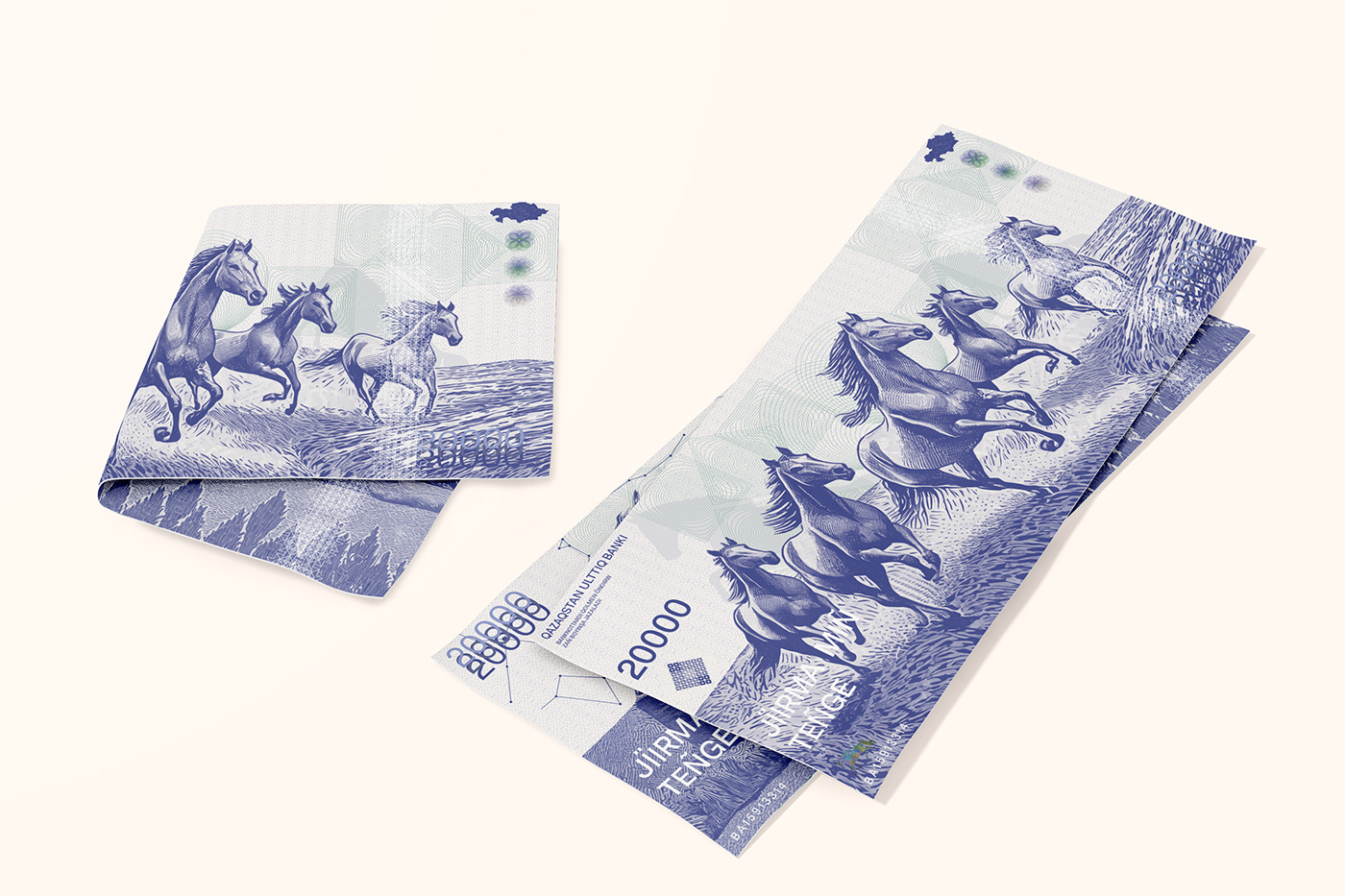
Design Concept
The Kazakhstan Banknote Series represents a fusion of cultural heritage, biodiversity conservation, and artistic expression. Comprising six distinct denominations, each featuring a sacred and rare animal indigenous to Kazakhstan, this series celebrates the nation's rich natural diversity while paying homage to its cultural heritage through traditional Kazakh style and ornaments.








Inspiration and Design Thinking
The inspiration for the Kazakhstan Wildlife Banknote Series stems from the deep reverence for nature ingrained in Kazakh culture. By integrating sacred and rare animals into the design, the series not only showcases Kazakhstan's biodiversity but also underscores the importance of preserving these majestic creatures and their habitats. The design process was guided by a desire to capture the essence of each animal within the context of traditional Kazakh artistry. Each banknote features intricate patterns and motifs inspired by Kazakh ornaments, reflecting the country's vibrant cultural tapestry. These motifs are not only aesthetically pleasing but also serve as integral components of the banknotes' security features, seamlessly blending tradition with modernity.














20000 Tenge Banknote: The highest denomination features horses galloping across the steppe, symbolizing freedom and the nomadic spirit that is deeply rooted in Kazakh culture. The reverse side of the 20000 Tenge banknote features picturesque yurts dotting the expansive steppe landscape. These traditional nomadic dwellings symbolize the rich cultural heritage and enduring spirit of the Kazakh people. Against the backdrop of vast open plains, the yurts evoke a sense of community and the nomadic lifestyle that has shaped the identity of Kazakhstan.




10000 Tenge Banknote: The snow leopard, a symbol of strength and resilience, is depicted against the backdrop of towering mountains, representing the rugged beauty of Kazakhstan's landscapes. On the reverse side of the 10000 Tenge banknote, delicate snowdrops adorn the rugged terrain of the mountainous regions. These resilient flowers, peeking through the snow, symbolize hope and renewal amidst the harsh winters of Kazakhstan's high-altitude landscapes. The beauty of the snowdrops against the towering mountains serves as a reminder of the resilience of both nature and the human spirit.




5000 Tenge Banknote: The argali sheep, a species native to the mountainous regions of Kazakhstan, is portrayed amid the peaks, embodying endurance and adaptability. The backside of the 5000 Tenge banknote showcases a vibrant poppy field set against the sweeping backdrop of the steppe. The vivid colors of the poppies contrast against the golden hues of the grasslands, creating a stunning visual representation of Kazakhstan's diverse flora. This scene not only celebrates the natural beauty of the steppe but also highlights the agricultural significance of the region.




2000 Tenge Banknote: The brown bear, a powerful yet elusive creature of the forest, is depicted amidst lush foliage, evoking the untamed wilderness of Kazakhstan's woodlands. A tranquil mountain river graces the reverse side of the 2000 Tenge banknote, winding its way through rugged terrain and lush forests. The river symbolizes the lifeblood of Kazakhstan's landscapes, sustaining both wildlife and human communities.




1000 Tenge Banknote: The saiga antelope, with its distinctive curved horns, roams the expansive steppe, symbolizing harmony between wildlife and the vast grasslands. The reverse side of the 1000 Tenge banknote features majestic mountains rising from the expansive steppe. These towering peaks stand as silent sentinels, overlooking the vast grasslands below. The juxtaposition of mountains and steppe embodies the diverse landscapes of Kazakhstan and underscores the country's rich natural heritage.




500 Tenge Banknote: The golden eagle soars majestically above the steppe, embodying grace and strength, while also reflecting the deep bond between the Kazakh people and their traditional art of falconry. A wheat field graces the backside of the 500 Tenge banknote, symbolizing abundance, prosperity, and the agricultural wealth of Kazakhstan. The gently swaying stalks of wheat evoke a sense of tranquility and abundance, reflecting the fertile plains that have sustained generations of Kazakh farmers.




Conclusion
The Kazakhstan Wildlife Banknote Series represents a harmonious blend of cultural heritage and ecological conservation. By showcasing the beauty of Kazakhstan's wildlife within the framework of traditional Kazakh design, this series not only celebrates the nation's natural heritage but also raises awareness about the importance of preserving it for future generations. Through meticulous attention to detail and thoughtful integration of security features, these banknotes serve not only as a medium of exchange but also as a testament to Kazakhstan's commitment to safeguarding its natural treasures.
Comment
The banknotes are presented solely as a conceptual design and does not hold any legal tender status. All intellectual property rights, including but not limited to the design and photographs contained within, are owned exclusively by Alpamys Yechshanov. This concept is not authorized for production or distribution without explicit permission from the owner of the intellectual property rights.





